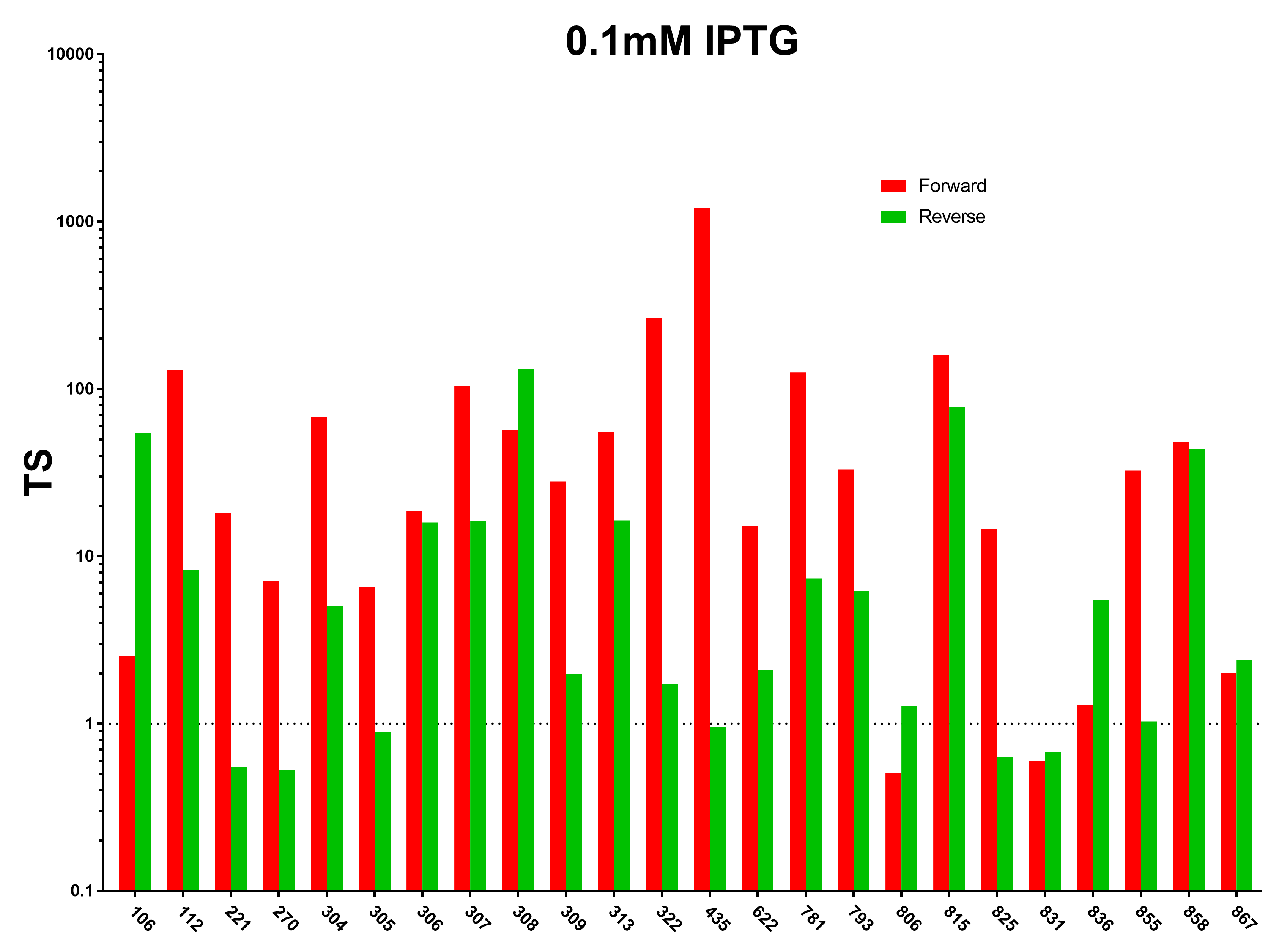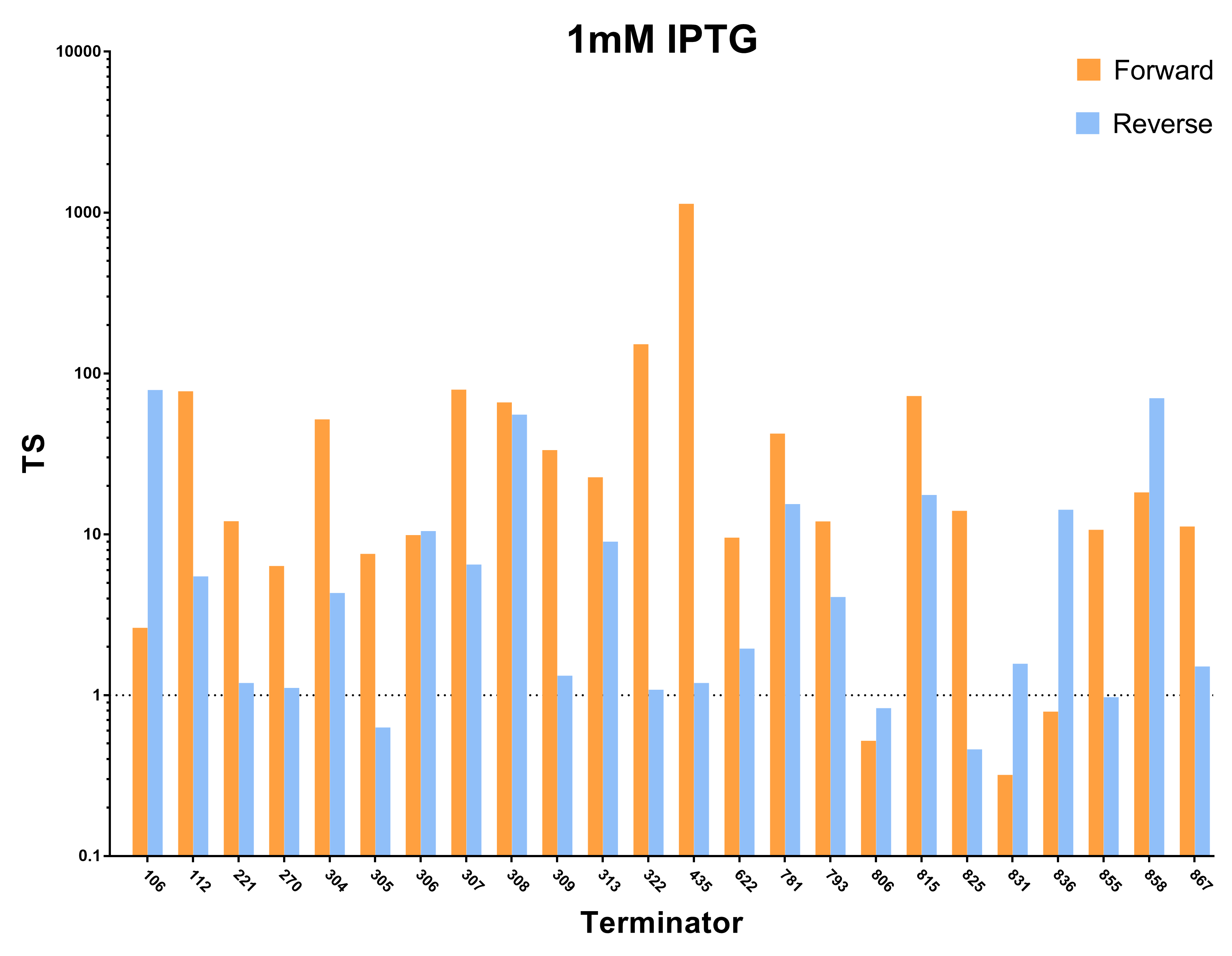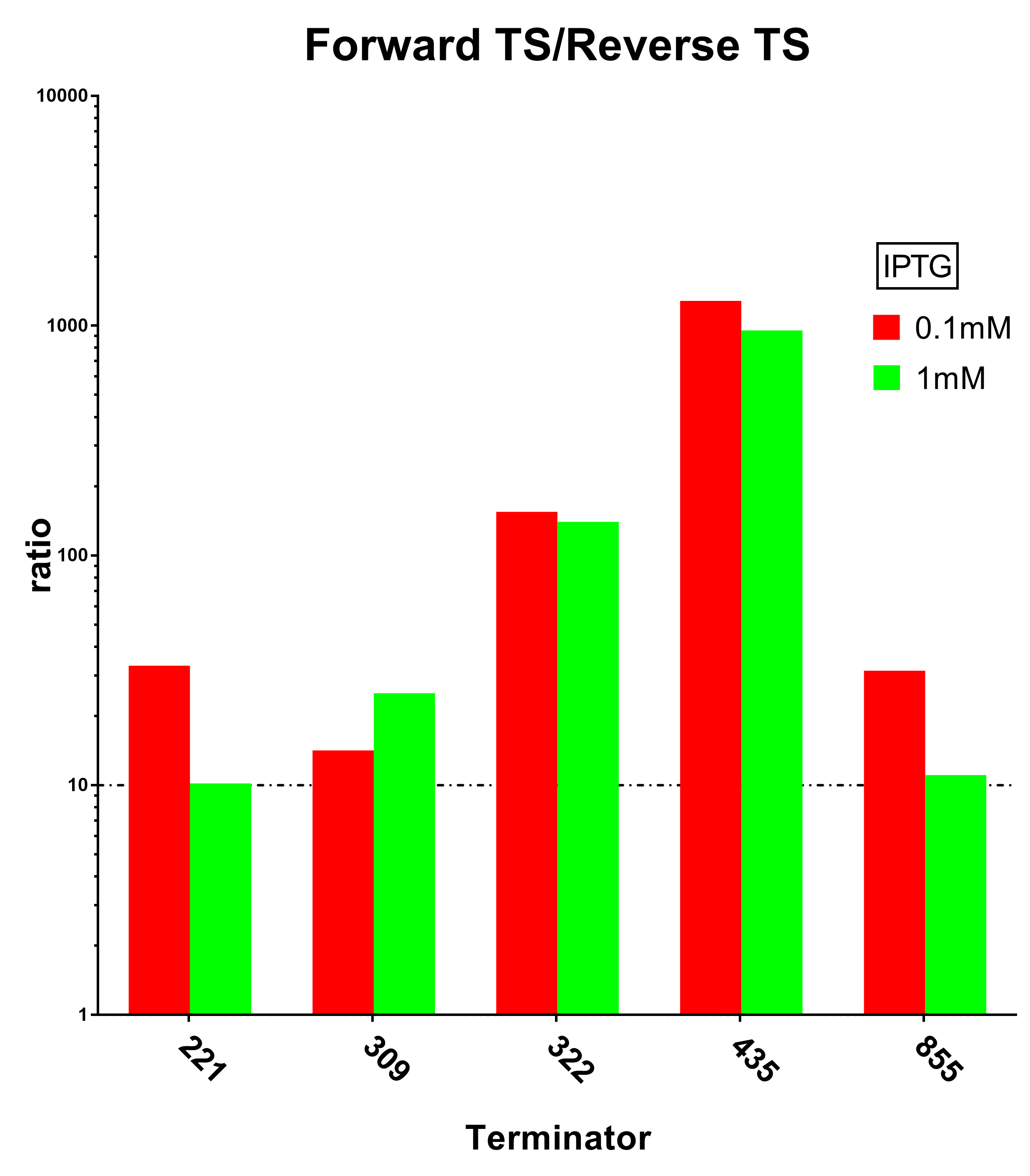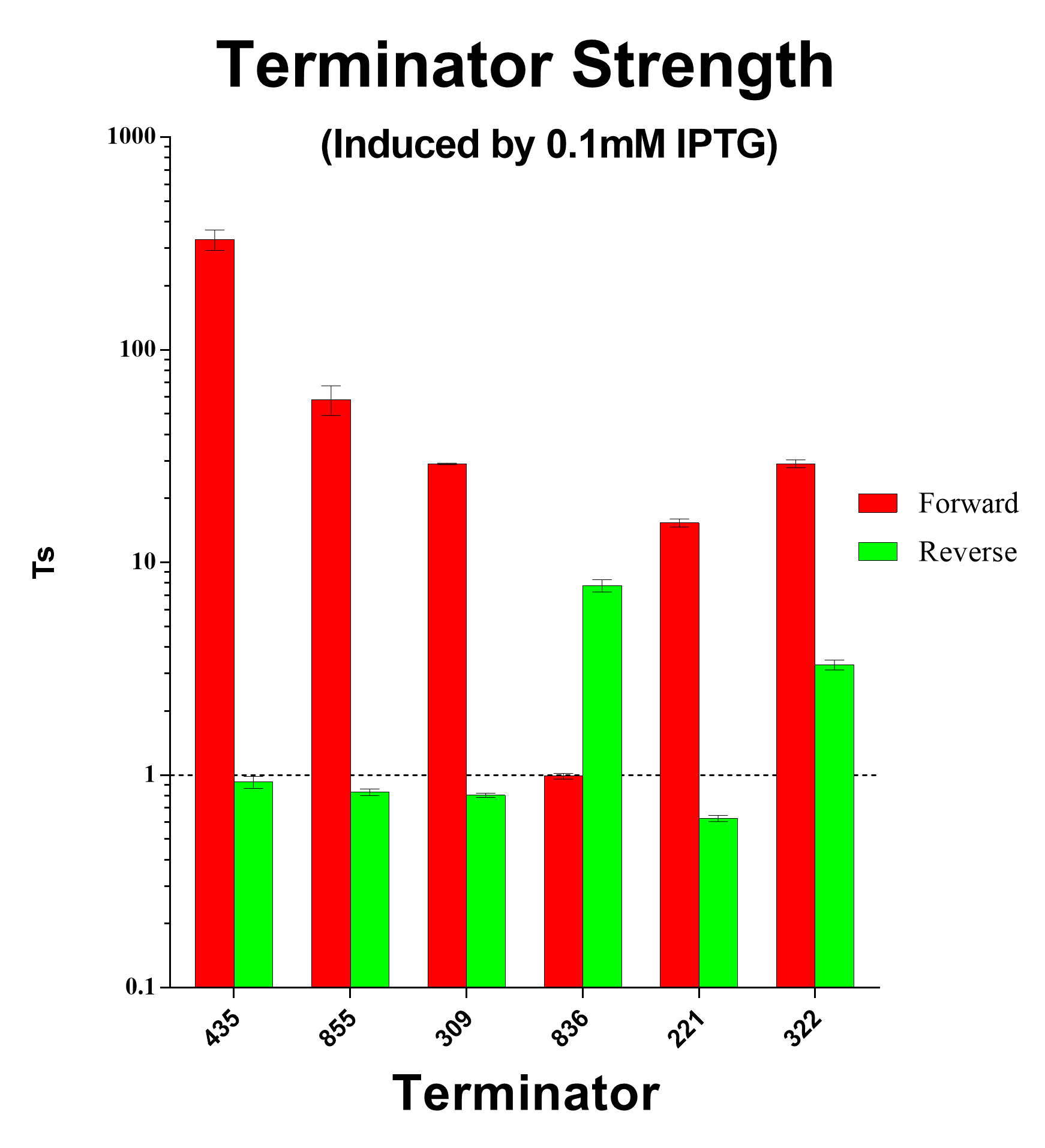Difference between revisions of "Part:BBa K2243029"
| (3 intermediate revisions by the same user not shown) | |||
| Line 1: | Line 1: | ||
| − | + | ||
<partinfo>BBa_K2243029 short</partinfo> | <partinfo>BBa_K2243029 short</partinfo> | ||
To test the influence of attBP sites of Int2 to terminator ECK120010855 (abbreviation: 855) in the forward direction. | To test the influence of attBP sites of Int2 to terminator ECK120010855 (abbreviation: 855) in the forward direction. | ||
| − | |||
| − | |||
| − | |||
<!-- --> | <!-- --> | ||
| − | + | <H2>Usage</H2> | |
We constructed this part to characterize the recombination efficiency of the integrase Int2. It consists of the terminator ECK120030221 (abbreviation: 221) in the reverse direction flanked by attB and attP sites of recombinase Int2. Upon recombination, the orientation of the terminator changes. As a result, expression of downstream sequence is blocked. | We constructed this part to characterize the recombination efficiency of the integrase Int2. It consists of the terminator ECK120030221 (abbreviation: 221) in the reverse direction flanked by attB and attP sites of recombinase Int2. Upon recombination, the orientation of the terminator changes. As a result, expression of downstream sequence is blocked. | ||
<!-- --> | <!-- --> | ||
| − | + | <h2>Biology</h2> | |
The attP site of Int2 is used to integrate phage DNA at the host attB site, generating the recombinant junctions attL and attR. DNA cleavage and re-ligation occur at the central crossover region at attB and attP, which allows the sequence to be flipped, excised, or inserted between recognition sites. We obtained the terminator, attB and attP sites by oligo synthesis. | The attP site of Int2 is used to integrate phage DNA at the host attB site, generating the recombinant junctions attL and attR. DNA cleavage and re-ligation occur at the central crossover region at attB and attP, which allows the sequence to be flipped, excised, or inserted between recognition sites. We obtained the terminator, attB and attP sites by oligo synthesis. | ||
<!-- --> | <!-- --> | ||
| − | + | <h2>Characterization</h2> | |
| − | + | We first characterized the terminator strength using the following formula: | |
Ts=〖GFP〗of the random sequence/〖[GFP]〗with the terminator | Ts=〖GFP〗of the random sequence/〖[GFP]〗with the terminator | ||
| + | [[File:Peking_TS_0.1mM.png|800px|thumb|center|Fig.1 Terminator Strength Induced with 0.1mM IPTG]] | ||
| + | |||
| + | [[File:Peking_TS_1mM.png|800px|thumb|center|Fig.2 Terminator Strength Induced with 1mM IPTG]] | ||
And we sifted out 6 desirable unidirectional terminators without potential cryptic promotor in both orientations. | And we sifted out 6 desirable unidirectional terminators without potential cryptic promotor in both orientations. | ||
| − | [[File:Peking | + | [[File:Peking ratio.png|600px|thumb|center|Fig.3 Terminator Strength Induced with 0.1M IPTG]] |
| − | [[File:Peking | + | [[File:Peking TS good terminators.png|600px|thumb|center|Fig.4 Forward and Reverse Terminator Strength Ratio Induced with 0.1mM and 1mM IPTG]] |
| − | + | <!-- --> | |
| + | <h2>Terminator Reference Table</h2> | ||
| − | + | [[Media:Peking_trt.xlsx]] | |
| − | |||
Latest revision as of 15:41, 1 November 2017
Int2 attB_855F_int2 attP
To test the influence of attBP sites of Int2 to terminator ECK120010855 (abbreviation: 855) in the forward direction.
Usage
We constructed this part to characterize the recombination efficiency of the integrase Int2. It consists of the terminator ECK120030221 (abbreviation: 221) in the reverse direction flanked by attB and attP sites of recombinase Int2. Upon recombination, the orientation of the terminator changes. As a result, expression of downstream sequence is blocked.
Biology
The attP site of Int2 is used to integrate phage DNA at the host attB site, generating the recombinant junctions attL and attR. DNA cleavage and re-ligation occur at the central crossover region at attB and attP, which allows the sequence to be flipped, excised, or inserted between recognition sites. We obtained the terminator, attB and attP sites by oligo synthesis.
Characterization
We first characterized the terminator strength using the following formula:
Ts=〖GFP〗of the random sequence/〖[GFP]〗with the terminator
And we sifted out 6 desirable unidirectional terminators without potential cryptic promotor in both orientations.
Terminator Reference Table
Sequence and Features
- 10COMPATIBLE WITH RFC[10]
- 12COMPATIBLE WITH RFC[12]
- 21COMPATIBLE WITH RFC[21]
- 23COMPATIBLE WITH RFC[23]
- 25COMPATIBLE WITH RFC[25]
- 1000INCOMPATIBLE WITH RFC[1000]Illegal SapI site found at 22




